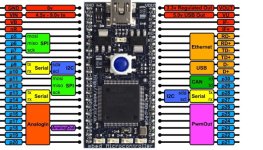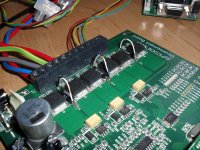Lebowski
10 MW
Alan B said:Lebowski said:Alan B said:Very nice work!
After having done what you have, do you feel the extra speed of the ARM is worthwhile? Would it make the job easier or not?
Looking at my controller etc, the capabilities of the ADC are most important, processor speed comes second. For me an ARM makes no
sence as I don't need the speed and it would need a separate ADC chip...
If the ADC is the most important item then perhaps a separate ADC is indicated. ADCs in micro chips are hardly the epitome of ADC performance!
The ADC's of the 30F / 33F have the capability to sample 4 inputs at the exact same time, something which is crucial to my controller. I don't really
need more bits than the 10 provided, its the simultaneous sampling of analog signals that is hard to find on other chips...





